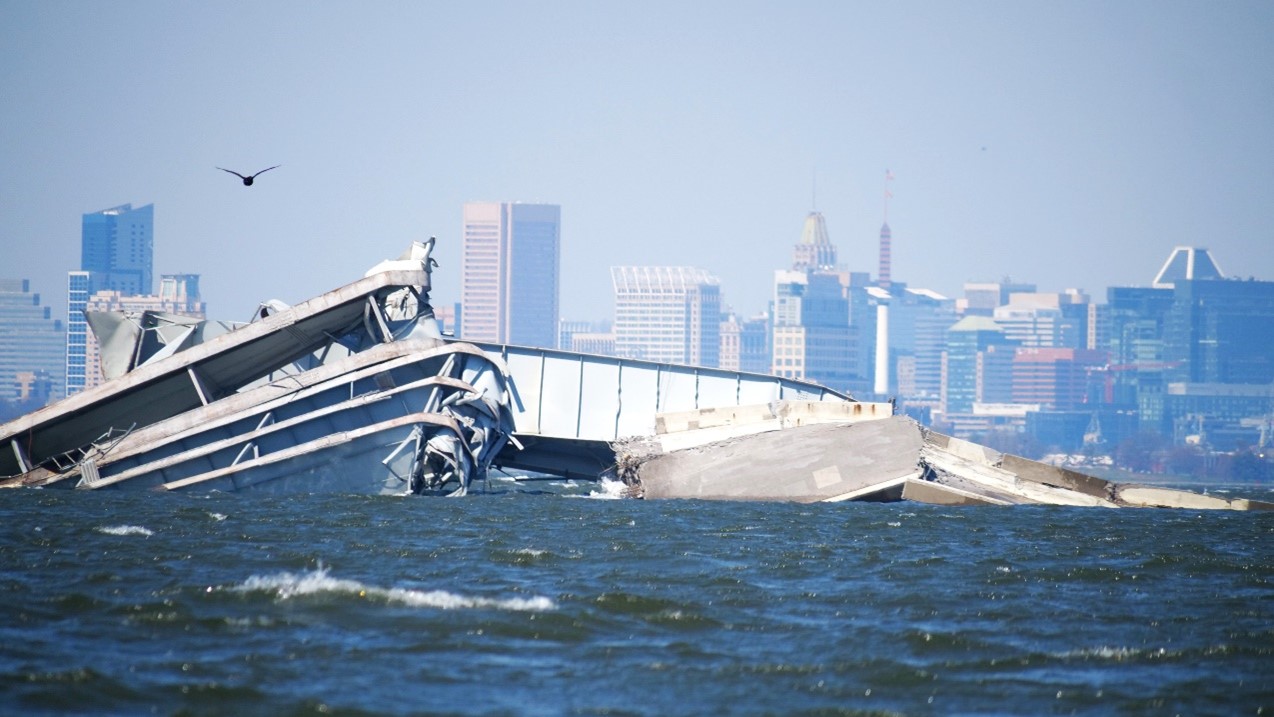|
April 6, 2024 A night of tragedy and professionalism during the Francis Scott Key Bridge collapse in Baltimore
PERF members, Sometimes one event happens that reminds me of how lucky we are to work in a field that makes a difference in people’s lives. A little over a week ago we woke to the news that the Francis Scott Key Bridge, which carried I-695 over the Patapsco River in Baltimore, collapsed after being struck by a cargo ship, the Dali. It’s a tragic incident—six construction workers on the bridge were killed, ship traffic in and out of the Port of Baltimore will probably be interrupted for months, and rebuilding the bridge will likely take years.
Source: U.S. Coast Guard Many might attribute this to a kind of divine providence—and given what could have transpired, I would not argue with them. But I would place equal weight on the quick communication, action, and decision-making by a small number of dedicated police officers. The details of how these individuals all did their jobs in a few short moments are incredible. Here is what I have read from the National Transportation Safety Board’s official timeline, as well as my interview with Jim Kruszynski, President of the Fraternal Order of Police Lodge 34, which includes the Maryland Transportation Authority (MDTA) Police. This is the timeline of events on the morning of Tuesday, March 26, and the actions of the MDTA Police officers. Less than five minutes after the first report of trouble on the Dali, the bridge was in the river. Think about the timing and decision-making that had to happen in that short time.
Source: Baltimore County Police Department First key decision: Corporal Herbert tells the officers to stop traffic on both sides of the bridge. Herbert received the mayday signal. At that moment, he notified two officers, Officer Garry Kirts on the south side of the bridge and Sergeant Paul Pastorek on the north side, to prevent vehicle traffic from entering the bridge. “No one knew the bridge was going to come down,” Kruszynski told me. “But everyone was taking steps to protect the worst-case scenario.” The decision to stop traffic proved crucial. According to Kruszynski, approximately 25-30 cars were stopped on each side of the bridge. One of the officers blocking traffic asked for another vehicle to relieve him, so he could reach the construction workers on the bridge. If he left his post unmanned, motorists likely would have followed him onto the bridge. Second key decision: Officer William Kinsey leaves his construction detail and rushes to the Port of Baltimore. Officer Kinsey was working a construction detail nearby on I-395. He heard the radio traffic and left his post to race over to the Port of Baltimore. Kinsey is assigned to the Marine Unit, so he grabbed a boat, met up with Officer Timothy Baublitz, and they headed to the scene. They arrived and, among the remnants of the bridge, they found one construction worker who had fallen from the bridge clinging to debris. Kinsey and Baublitz pulled him into the boat. This construction worker turns out to be one of only two survivors from the crew working on the bridge. Suddenly, in five short minutes, the lives of countless individuals were saved because of the decisions and actions of these officers. One minute cops were shielding construction workers from traffic, and the next minute they were working to pull those construction workers from the wreckage of the bridge. We all know these officers did what they were trained to do. This was an extraordinary case—probably not a scenario they had practiced in the academy—but, thanks to their training, experience, and commitment to protecting others, they did what was needed that night. They did what good cops do: run toward danger.
Source: U.S. Coast Guard Cops do this every day—though fortunately they’re not usually responding to tragedies of this scale. They read the body language of someone who made a seemingly minor call to 911, identify a more serious underlying problem, and intervene to get that person help. They see someone, perhaps in crisis, near the edge of a bridge and engage them in conversation. They hear gunshots and run toward them. They stock a fridge in a home where they see a child going hungry. These decisions don’t happen on their own, and not everyone can make them. Cops seek out this work. They are trained to do it. They do it daily. And, in the vast majority of cases, they do it well. I want to express my deepest sympathies to the families of the construction workers who tragically died, and my appreciation to the cops who acted decisively to prevent additional fatalities. I wish we saw more coverage of officers making good decisions like this, and we are all thankful that these officers were there that night. Best, Chuck |



